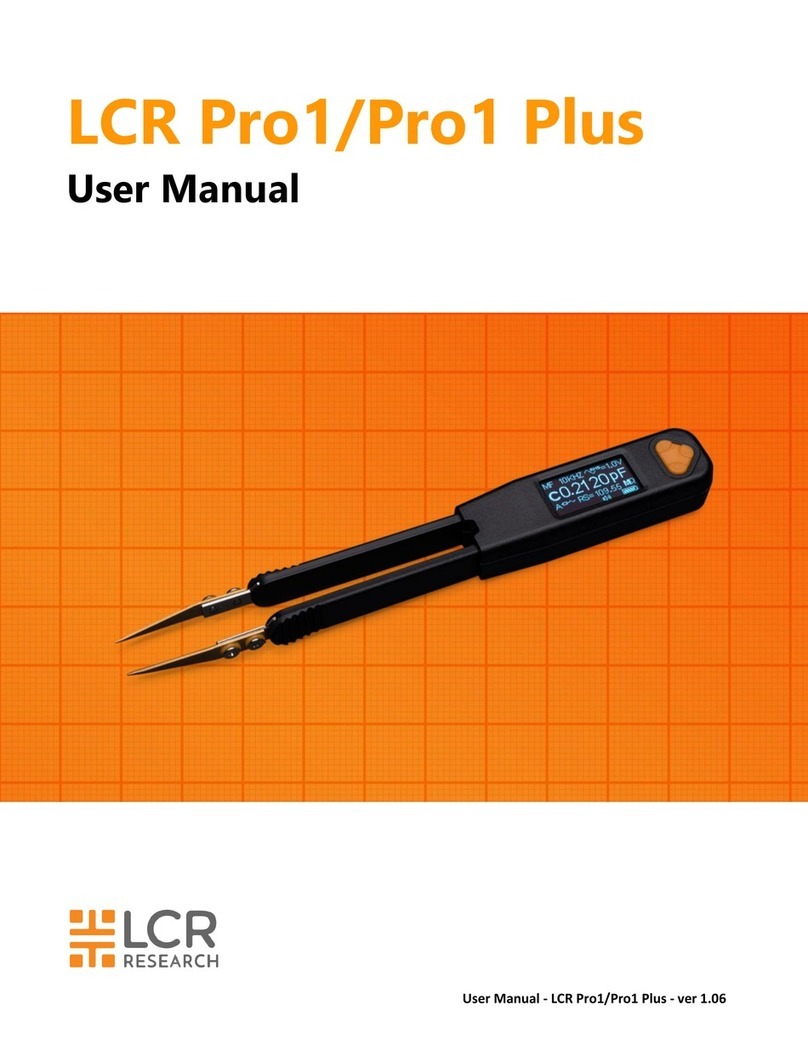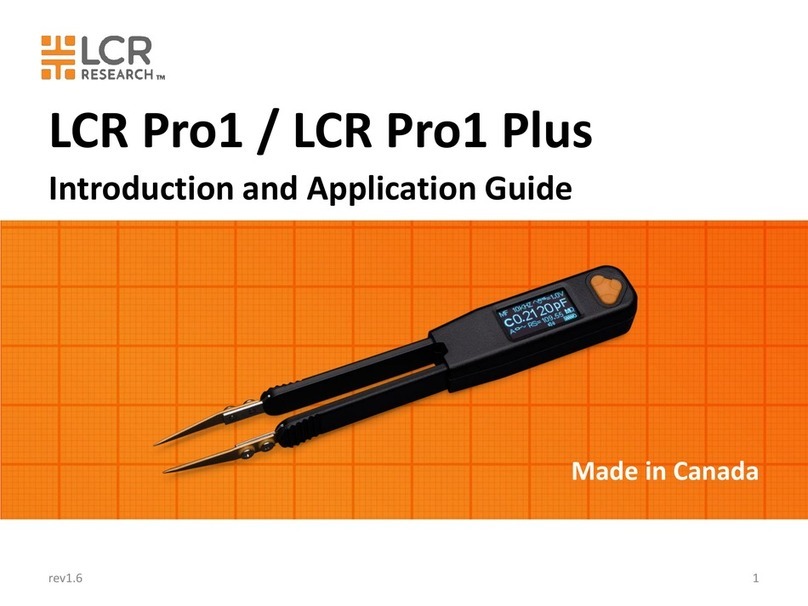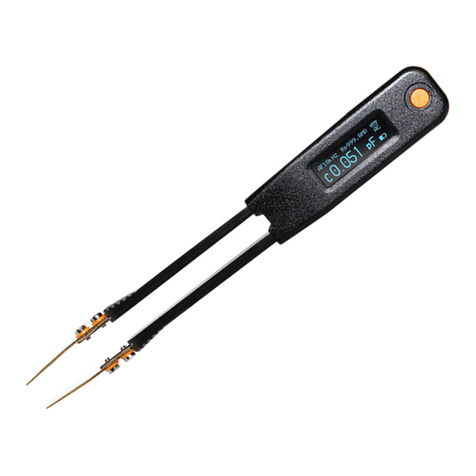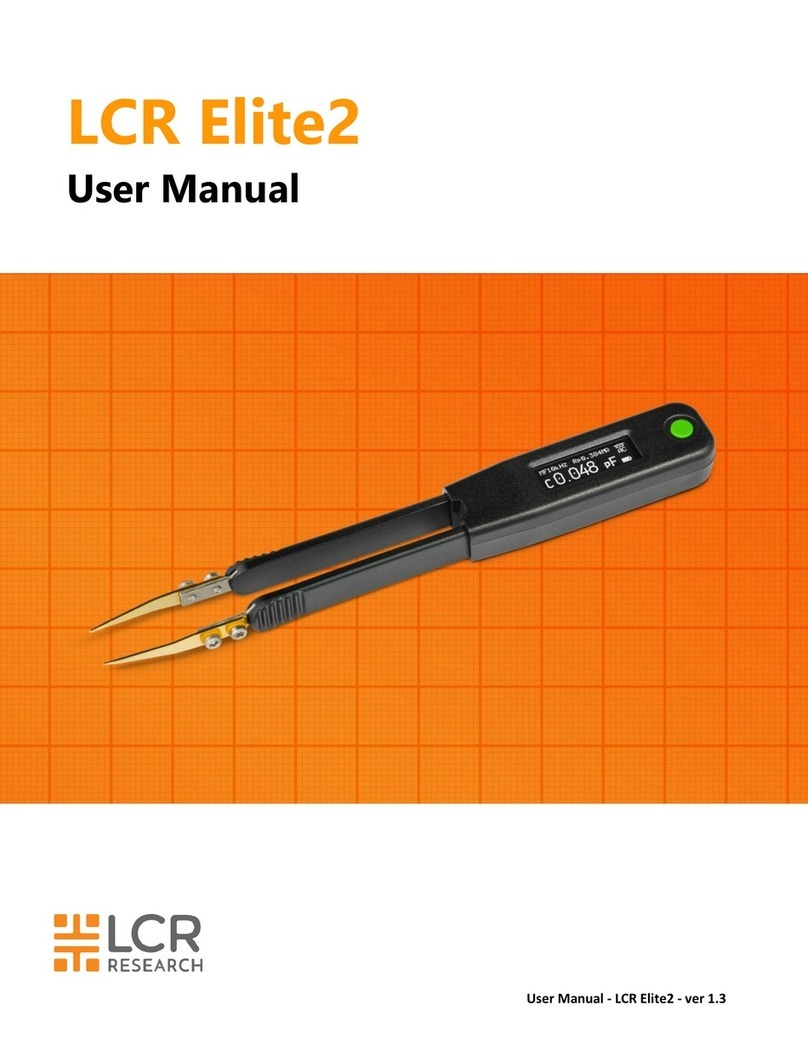
LCR Elite1 User Manual - ver 1.1
Notices
The information contained in this document is provided “as is”, and is subject to change, without notice, in
future editions.
This document contains proprietary information that is protected by copyright. All rights are reserved. No
part of this document may be photocopied, reproduced, or translated to another language without the prior
agreement and written consent from LCR Research Ltd.
© LCR Research Ltd. 2015
Warranty
LCR Research warrants this product to be free from defects in materials and workmanship for a period of
one (1) year from the shipment date. LCR Research warrants the following items for ninety (90) days from
the date of shipment: rechargeable batteries, gold plated tips and documentation. During the warranty
period, LCR Research will, at its option, either repair or replace products that prove to be defective. For
warranty service or repair, this product must be returned to a service facility designated by LCR Research.
The buyer shall prepay shipping charges to LCR Research, and LCR Research shall pay shipping charges to
return the product to the buyer. However, the Buyer shall pay all shipping charges, duties, and taxes for
products returned to LCR Research from another country. Repaired or replaced products are warranted for
the balance of the original warranty period.
Limitation of Warranty
This warranty does not cover normal wear and tear and scratches on surface or screen. This warranty does
not cover physical damage to the screen, switch and/or button; electrical damage of the product due to high
voltage or improper battery type. This warranty does not cover to any product from which the serial number
has been removed or that has been damaged or rendered defective resulting from improper or inadequate
maintenance by the Buyer, software, interfacing or parts not supplied by LCR Research, unauthorized
modication or misuse, operation outside the usage parameters stated in the user documentation, or
improper site preparation or maintenance.
LCR Research specically disclaims no other warranty is expressed or implied, including the implied
warranties of merchantability or tness for a particular purpose. LCR Research shall not be liable for errors
or for incidental or consequential damages in connection with the furnishing, use, or performance of this
document or of any information contained herein.
Exclusive Remedies
The remedies provided herein are the Buyer’s sole and exclusive remedies. LCR Research shall not be liable
for any direct, indirect, special, incidental, or consequential damages, whether based on contract, tort, or
any other legal theory. Such excluded damages shall include, but are not limited to: costs of removal and
installation, losses sustained as the result of injury to any person, or damage to property.

































